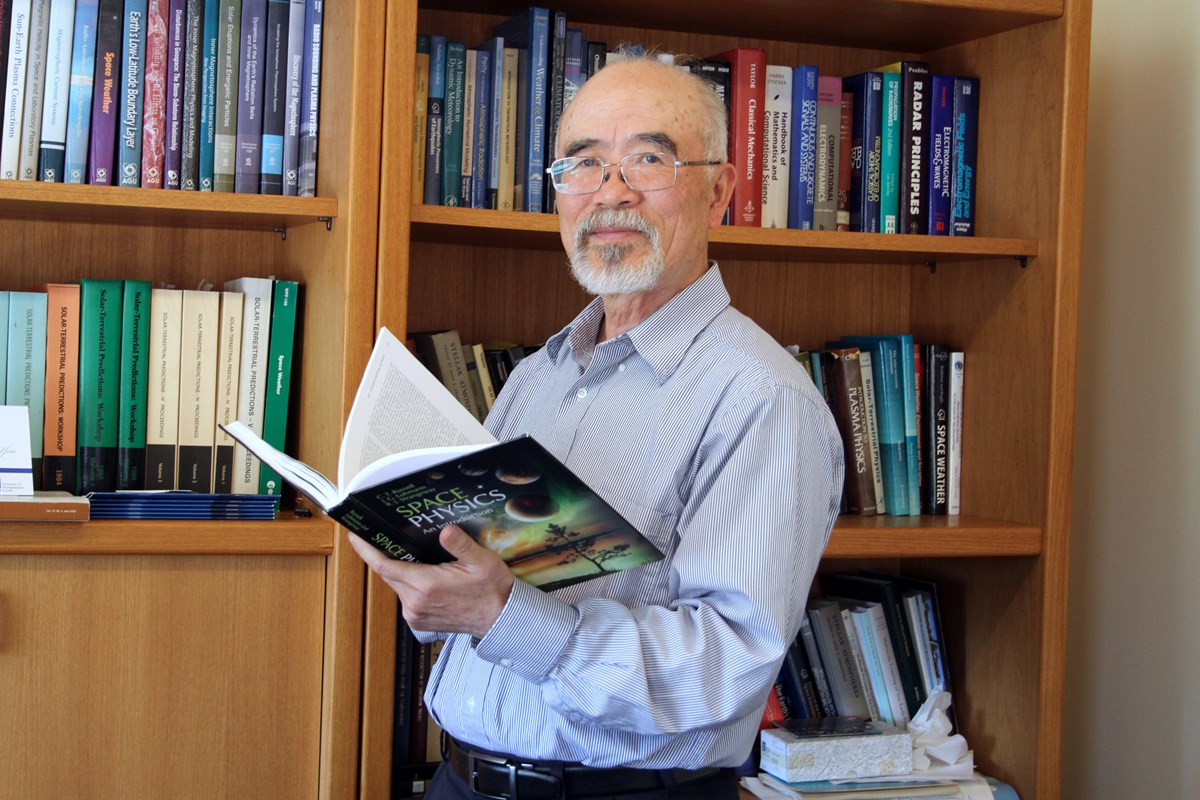Prof. Paul Song Takes His Cue from the Sun to Predict Havoc-Wreaking Space Storms

10/05/2023
By Edwin L. Aguirre
We all know about the importance of weather—we rely on local forecasts to plan our vacations, schedule outdoor picnics and even decide when to plant flowers or water the lawn.
But chances are, you haven’t heard about “space weather.” This branch of science deals with the constantly changing environmental conditions in interplanetary space, especially between the sun and the Earth’s outer atmosphere.
Prof. Paul Song of the Department of Physics and Applied Physics is UMass Lowell’s chief space weather forecaster. An expert in geophysics and solar plasma physics, Song directs the university’s Space Science Laboratory near East Campus.
While TV meteorologists talk about temperature, air pressure, wind, clouds, precipitation and the jet stream, space weather researchers like Song focus on changes in ambient space plasma (ionized gas), solar wind, magnetic fields and radiation in response to the sun’s activity.
“Predicting space weather is the next frontier in weather forecasting,” says Song. “Inclement space weather triggered by massive storms on the sun has increasingly become a threat to our modern space-based technology infrastructure.”
Titanic eruptions on the sun — called solar flares and coronal mass ejections—can wreak havoc on our planet.
According to Song, the storm of high-energy particles from flares, as well as the billions of tons of magnetized plasma hurled into space by coronal mass ejections, can damage vital electronics of Earth-orbiting satellites, disrupt GPS navigation, cause widespread radio communication blackouts and overload transformers on electric power grids. They can also expose astronauts aboard the International Space Station and high-flying aircraft passengers to hazardous doses of radiation.
By understanding how solar eruptions form and propagate, Song hopes to be able to make more accurate predictions and provide ample warning time to mitigate their effects.
“For example, if we know a powerful geomagnetic storm is coming, operators can put satellites and power utilities into ‘safe mode,’” says Song. “Astronauts can also take shelter in a protective room on the space station, and passenger jets can descend to lower altitudes.”
Song, who is an editor of the Journal of Geophysical Research, is considered one of the founders of the growing field of space weather, along with the late Prof. George Siscoe of Boston University.
“I’m glad I’m able to contribute to our fundamental knowledge about the sun and space weather, and how they can impact the lives of people here on Earth,” says Song.
